Havana is one of the oldest cities in the Western world. Over the course of its 500-year history, the city has endured European rule, pirate invasions, and American gangsters. This year the city celebrates its 500-year anniversary, commemorating its dynamic evolution and impressive heritage.
Like New Orleans during Mardi Gras, Munich’s Oktoberfest, and St. Patrick’s Day in New York or Ireland, the 500-year anniversary of Havana will be a vibrant celebration with special events planned for weeks surrounding the official date (November 16th). The city is a living archive of every interesting style of Western architecture from the past 100 years, and many renovation projects are in the final stages in honour of the big day.
Landmarks To See
Once a home for artists like Hemingway and still an artistic hub, Havana is a magnificent cacophony of aesthetics. European influenced architecture with cobblestone streets create a majestic scene showcasing examples from the Colonial, Baroque, and Neoclassical styles, to Art Deco, Art Nouveau, Eclectic and beyond.
El Capitolio
Inspired by the Pantheon and United States Capitol (just one metre taller and wider), El Capitolio sits at the centre of Old Havana. Recently renovated and opened to the public, few have seen this remarkable landmark up close in its new mint state.
The gardens that trace the perimeter of the building were designed by French landscape architect, Jean-Claude Nicolas, giving the lush area a Parisian flare. Hibiscus flowers bloom year-round inviting hummingbirds. Once inside, you are met with the Hall of Lost Steps where the ceilings rise so high that they actually mute echoes and imported French lamps line the walls. Marble floors in shades of tan, gold, green and coral swirl beneath you and the centre of the hall marks mile zero of the Cuban Carretera Central (Central Highway). It is here where the third largest indoor statue in the world resides. The fifty-foot, 22 karat gold Statue of the Republic. Nestled at the foot of the figure is a 24-carat diamond. The original is hidden in the mountains of Cuba, and that’s probably for the best since it is considered to be haunted.
Finca Vigía
A trip to Finca Vigía offers a glimpse into the brilliant mind that produced literary classics like Old Man And The Sea. It was in this house where Hemingway orchestrated the works that led to his Nobel Prize in Literature. Always talking with a glass of scotch or bourbon and water clenched firmly in his hand, Hemingway was predictably unpredictable.
In 1960, the writer left Cuba and never returned. From his typewriter, to his book collection, the house remains undisturbed and showcases Hemingway’s intimate quarters in their most authentic state.
During his time in Havana, Hemingway entertained countless fascinating visitors. The unrestored pool where Ava Gardner skinny dipped still rests beneath the shade in Hemingway’s backyard. The tennis courts where acquaintances like Clark Gable used to play now hold Hemingway’s beloved fishing boat. Roaming around the author’s personal oasis you get the sense that you are communing with spirits from a bygone era.
El Prado
Coursing through the heart of Havana, El Paseo del Prado is the most travelled street in the city. Colourful classic cars cruise beside you as you wander along the shady aisle. Similar to the busy streets of Madrid, El Prado is brimming with locals.
More than a busy road, El Prado has long been a runway for Cuban pedestrians and artists to strut their stuff. Inspired by the island’s magic, fashion brand, Chanel, transformed the historic cobblestone street into its literal designer runway flooding the avenue with cars, models, and celebrities to launch its Resort 2017 collection. Today you’ll find it’s a hub for creatives showcasing their artistry, and a meeting ground for residents. A principal avenue at the heart of this famed city, El Prado is the perfect place for shopping, browsing and people watching.
Neighbourhoods To Get Lost In
Each distinct neighbourhood of Havana proudly boasts its own personality. As you explore the diverse corners, you will notice a common thread and come to understand why Havana has been named the “City of Columns.”
La Habana Vieja
Incredibly restored colonial buildings border the cobblestone streets of La Habana Vieja (Old Havana) and offer unparalleled glimpses into Cuba’s Spanish colonial period. Wandering through Plaza de Armas, the oldest of the city’s five main squares (circa 1520s), feels like a leisurely drift back in time. Peer into local businesses and homes for a glimpse of contemporary life in the old city. Stop by Habana 1791 (aka Museo del Perfume) and marvel at the grand beauty of a perfume shop selling custom-made fragrances and historical artefacts inside an 18th century mansion with an interior courtyard that to this day doubles as a private home.
Watch as local games of dominos appear and dissolve from one hour to the next. Beat the tropical heat with a freshly made gelato from one of the small shops. Encounter street performers singing joyfully while you sip on cafecito or enjoy a classic mojito. Discover the allure of authentic hand-rolled Cuban cigars at a private tasting session. And find out why the towers flanking the Plaza de la Catedral are completely different.
Vedado
The “forbidden” city of Vedado rests a few miles west of Old Havana and is rich in relics. A once dense forest was transformed into a closed military defence zone by Spanish colonisers, hence the name “Vedado” which means “forbidden” in Spanish. Another amalgamation of old and new, this neighbourhood contains grand palatial properties that predate the revolution. Many are still private homes. Interestingly, the area is also home to a statue of John Lennon.
Dive into Vedado’s past (and perhaps take a piece with you) with a stop at Belkis, a real hidden gem and beautiful two-story home teeming with antique ceramics, glassware, furniture, paintings, trinkets and so much more; all for sale.
Art To Experience
Art defines the city of Havana. Cuban creativity transcends space and time, with inspiring contemporary works from many different artistic realms on display in traditional museums, galleries and flooding the streets.
Fábrica de Arte Cubano
Fábrica de Arte Cubano (FAC) is a must see creative and cultural hub, with each room featuring a mélange of different local and international artists. The best of Cuba’s writers, musicians, performers, painters, intellectuals and photographers convene at the FAC to display their latest works in what was once a cooking-oil factory. The labyrinth-like space was dreamt up by X- Alfonso, a Cuban afro-rocker, and came to life in 2014. The FAC is many things, a nightlife spot, an art gallery, a bar/club, and a performance space. Grab dinner at Tierra, in the VIP lounge, for a worldly dining experience or enjoy a 40-ounce mojito (for just $10!) as you weave in and out of the different gallery rooms.
Fusterlandia
Cuban born artist José Fuster made the neighbourhood of Jaimanitas his canvas and dubbed it Fusterlandia. Over 80 structures have been transformed into a playful display of colours and textures. Fuster uses mosaic tiles to coat homes, office buildings, benches, bus stops, walls, and more; leaving behind an enchanting whimsical world seemingly dreamt up from a child’s fantasy.
Often compared to Picasso and Gaudí, Fuster’s unique style has garnered much attention across the world. The once poor, rundown neighbourhood and fishing community is now a vibrant masterpiece bustling with visitors the likes of Madonna and Katy Perry.
Street Art Tour
You cannot escape art in Havana. And why would you want to!? All along the streets, walls are coated with murals, banners and colours from local artists. Impressive graffiti is stamped on many buildings throughout the city. Book a private art tour to discover the most impressive pieces and understand their cultural references, even meet the artists, and visit their private homes and studios.
If looking to explore solo, it’s best to browse specific areas such as el Callejón de Hamel. This spot has become internationally famous for its Afro-Cuban style. Not only is there plenty to look at, but you can enjoy local cocktails and concerts as well.
Restaurants
Cuban food is a delicious amalgamation of aboriginal, Spanish, African, Caribbean and French cuisine. Staple ingredients include rice, pork, yuca, black beans and sweet plantains. Havana, in particular, also has many international restaurants.
Tierra
Self-described as “worldly culinary art,” the menu at Tierra is innovative and daring; bringing together international culinary traditions. The house specialties highlight established and popular dishes from Portugal, Spain, Cuba, Thailand, Greece, Brazil, and England, all with a distinct flair. Not surprising they’ve adopted the saying “Around the world in 20 plates.” The restaurant is situated on the second floor of the Fábrica de Arte Cubana aka FAC. Not necessarily easy to find for first time visitors, given it’s located inside the VIP section, the small space is stylishly decorated, and feels like a private rooftop garden bar. Try the pork confit and the tostones! And be sure to make a reservation. Since you’ll already be in the FAC, enjoy some art after dinner.
El Del Frente
One of the coolest bars/restaurants, El Del Frente is known for its mixologists and their amazingly unique, strong and colourful cocktails, as well as it’s eclectic décor and food. Enter through a narrow doorway from the street, climb the steep stairs and you’ll find yourself in the main dining room. One more flight of stairs and you’ve made it to the rooftop area. Guests are greeted with colourful ornamentation, cool vintage posters and photography, and a warm and friendly staff. Grab a mojito and then try the grilled lobster and the croquettes. Oh, and ask about the cold soup, you won’t regret it. Highly recommended that you make reservations ahead of time.
Where To Shop
Dador
Cuban fashion house and lifestyle brand, Dador, is a collaborative project releasing limited edition collections influenced by the island’s magic. All handcrafted and designed in Cuba using only natural fabrics, they showcase contemporary Cuban artistry through their unique patterns, eye-catching prints, and stylish and casual draping. Situated in the heart of Old Havana, in a now restored but once rundown space, Dador creators bring an inspired approach and a refreshing vision to casual wear. Their latest collection borrows visual elements from Cuba’s traditional stained-glass windows and metal work, translating them into elaborate and handmade crochet knit pieces.
View this post on Instagram
Clandestina
Cuba’s first urban fashion brand, Clandestina, is sustainable, inclusive, gender neutral and 99% designed in Cuba. Founded by women and grit, Clandestina is known for making the most out of limited resources, creating bold and colourful graphic designs, and their now famous “Actually, I’m in Havana” slogan. Selling t-shirts, accessories, prints and other artwork from their flagship shop and print studio in Old Havana, Clandestina has become a shining example of private entrepreneurship in an island where the private sector is a relatively new development. They are also the island’s first e-commerce store so you can order online (yes, they ship worldwide).

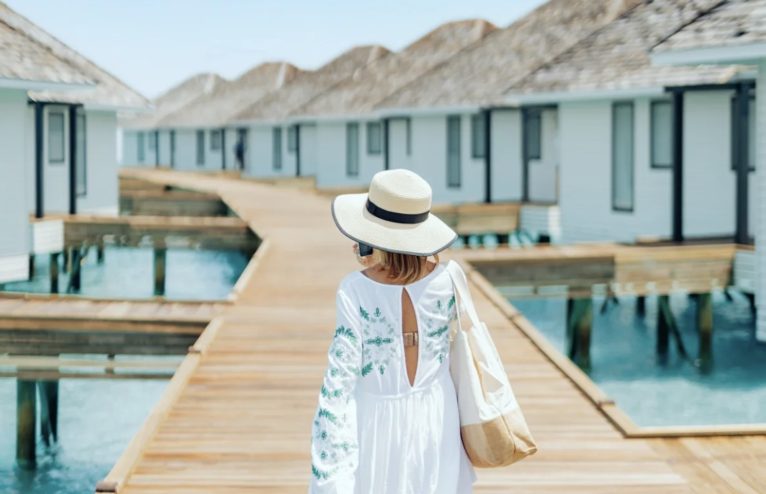
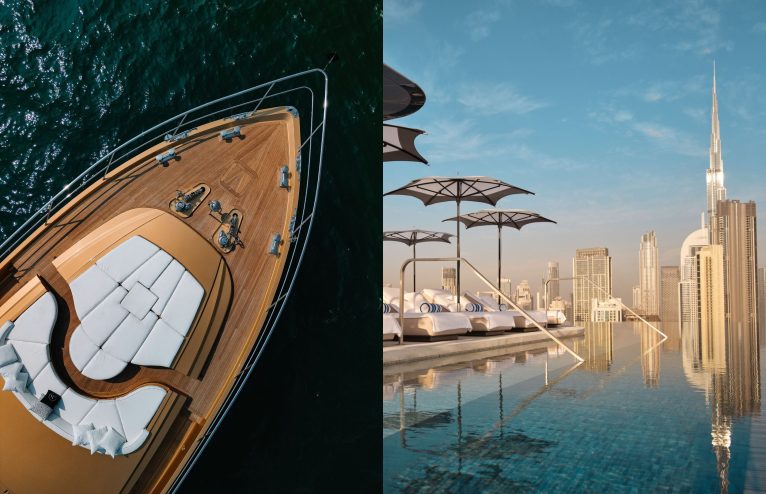

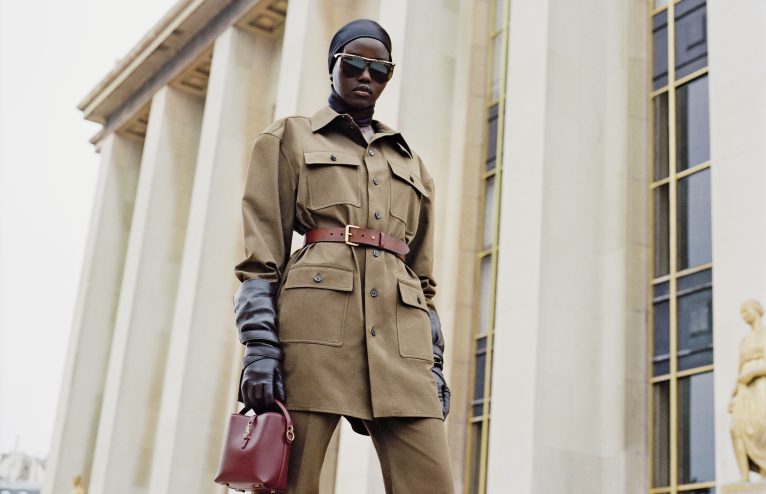


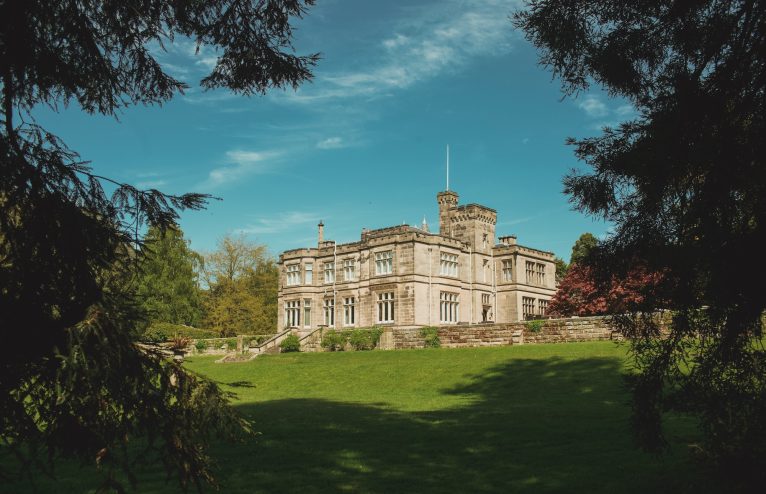
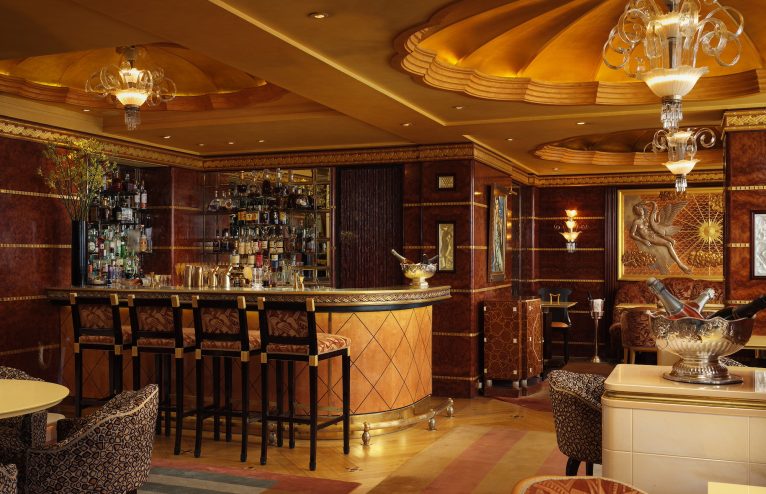

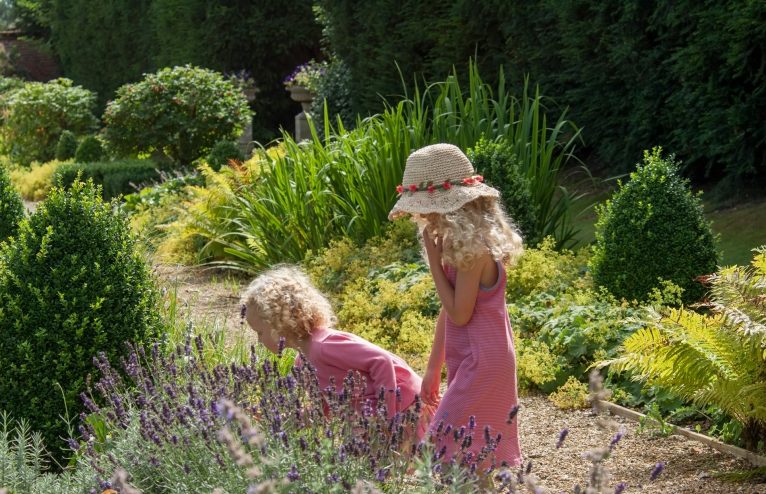





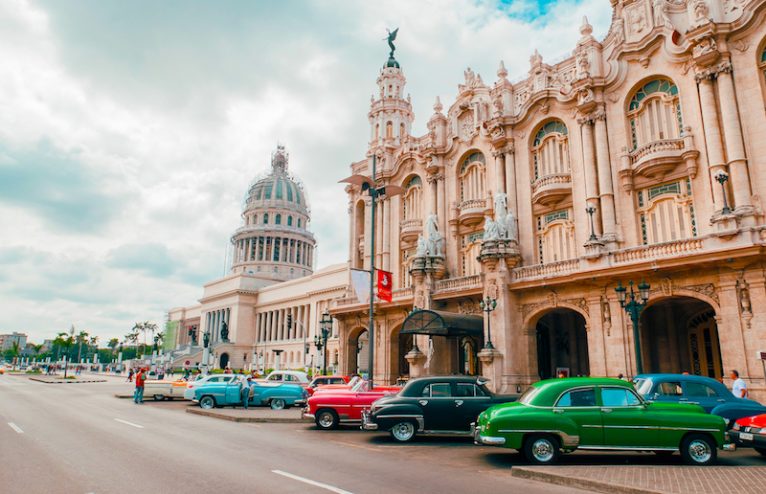

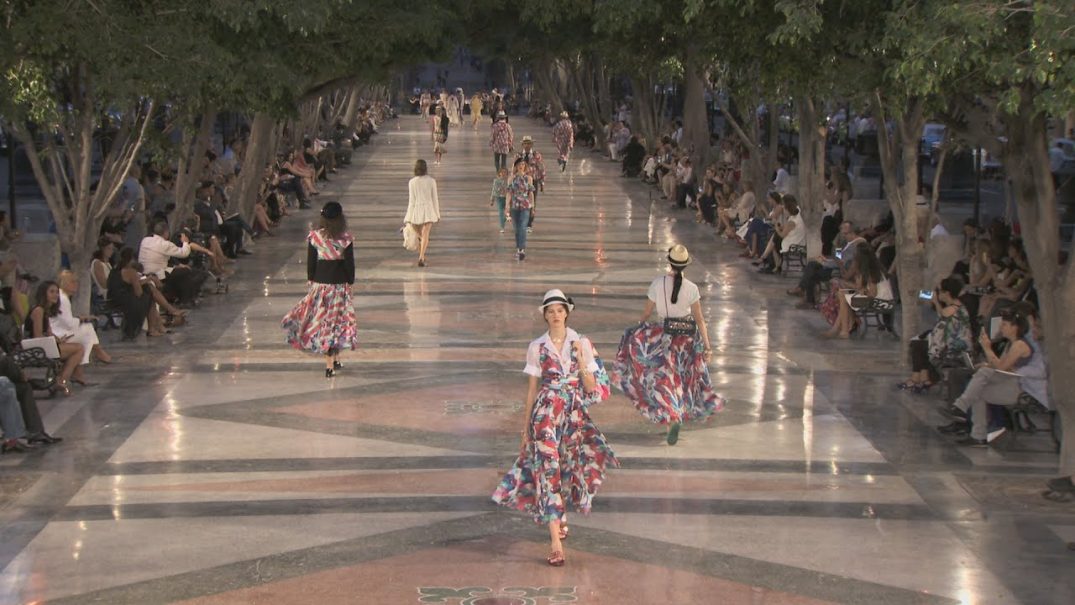


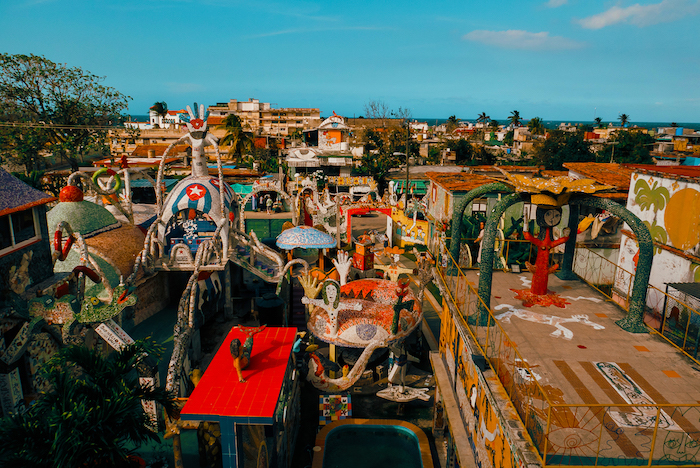



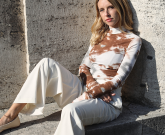

Any Questions or Tips to add?